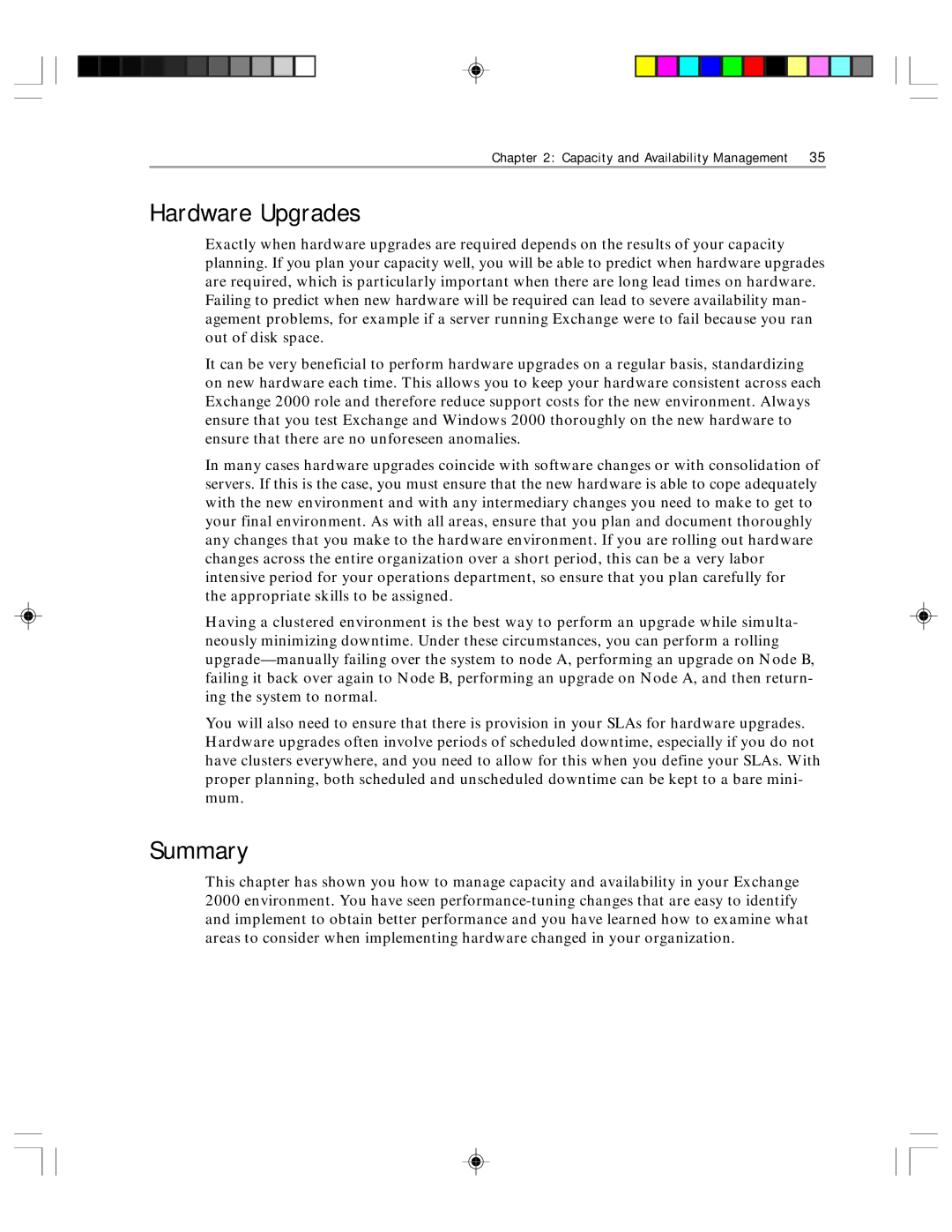
Chapter 2: Capacity and Availability Management 35
Hardware Upgrades
Exactly when hardware upgrades are required depends on the results of your capacity planning. If you plan your capacity well, you will be able to predict when hardware upgrades are required, which is particularly important when there are long lead times on hardware. Failing to predict when new hardware will be required can lead to severe availability man- agement problems, for example if a server running Exchange were to fail because you ran out of disk space.
It can be very beneficial to perform hardware upgrades on a regular basis, standardizing on new hardware each time. This allows you to keep your hardware consistent across each Exchange 2000 role and therefore reduce support costs for the new environment. Always ensure that you test Exchange and Windows 2000 thoroughly on the new hardware to ensure that there are no unforeseen anomalies.
In many cases hardware upgrades coincide with software changes or with consolidation of servers. If this is the case, you must ensure that the new hardware is able to cope adequately with the new environment and with any intermediary changes you need to make to get to your final environment. As with all areas, ensure that you plan and document thoroughly any changes that you make to the hardware environment. If you are rolling out hardware changes across the entire organization over a short period, this can be a very labor intensive period for your operations department, so ensure that you plan carefully for the appropriate skills to be assigned.
Having a clustered environment is the best way to perform an upgrade while simulta- neously minimizing downtime. Under these circumstances, you can perform a rolling
You will also need to ensure that there is provision in your SLAs for hardware upgrades. Hardware upgrades often involve periods of scheduled downtime, especially if you do not have clusters everywhere, and you need to allow for this when you define your SLAs. With proper planning, both scheduled and unscheduled downtime can be kept to a bare mini- mum.
Summary
This chapter has shown you how to manage capacity and availability in your Exchange 2000 environment. You have seen
